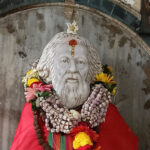Shakti Peethas are sacred shrines dedicated to the Goddess Shakti (the Divine Feminine), and they hold immense religious significance in Hinduism. These temples are said to be locations where parts of the goddess’s body, or her consort Lord Shiva, fell to earth as a result of the divine events described in the Shakti Puranas.
The Shakti Peethas are spread across India and beyond, and West Bengal, a state with rich cultural and religious traditions, is home to several important Shakti Peethas.
Shakti Peethas in West Bengal
Shakti Peethas in West Bengal attract pilgrims from all over India and the world, as they are believed to be blessed with the presence of the goddess herself. Here’s a list of the prominent Shakti Peethas located in West Bengal:
1. Kalighat Temple (Kolkata)
- Location: Kalighat, Kolkata, West Bengal
- Deity: Goddess Kali
- Significance: Kalighat is one of the most famous Shakti Peethas in India. It is believed that the toes of Sati (Parvati), the consort of Lord Shiva, fell here when Lord Shiva carried her body after her self-immolation. This Kalighat Temple is dedicated to Goddess Kali, who is worshiped as a powerful form of Shakti. It is an important pilgrimage destination, particularly during the festival of Kali Puja.
2. Tarapith Temple (Birbhum)
- Location: Tarapith, Birbhum, West Bengal
- Deity: Goddess Tara
- Significance: Tarapith is another significant Shakti Peetha in West Bengal. The temple is dedicated to Goddess Tara, an aspect of the divine feminine who represents the power of protection. It is believed that Sati’s right eye fell here during the cosmic event. The temple is famous for its mystic atmosphere, and it attracts devotees who seek spiritual power and peace.
3. Madhabkunda Temple (Purulia)
- Location: Madhabkunda, Purulia, West Bengal
- Deity: Goddess Shakti (in the form of Sati)
- Significance: Madhabkunda is another revered Shakti Peetha in West Bengal. It is believed to be the site where a part of Sati’s body fell, though the specific part is less clear. The temple has an ancient idol of the goddess, and pilgrims come here for blessings of fertility, health, and prosperity.
4. Sahasradhara Shakti Peetha (Bankura)
- Location: Sahasradhara, Bankura, West Bengal
- Deity: Goddess Durga
- Significance: This Shakti Peetha is dedicated to Goddess Durga. It is said that the site marks where parts of the body of Sati fell, particularly her left shoulder. The temple is a symbol of power and strength, attracting many devotees, especially during the festival of Durga Puja.
5. Bidhannagar Shakti Peetha (North 24 Parganas)
- Location: Bidhannagar, North 24 Parganas, West Bengal
- Deity: Goddess Shakti (in her various forms)
- Significance: Though not as widely known as other Shakti Peethas, this temple is dedicated to the worship of Shakti in many forms. It is believed to be a site of divine energy where Sati’s body parts were scattered.
6. Khirpai Shakti Peetha (Paschim Medinipur)
- Location: Khirpai, Paschim Medinipur, West Bengal
- Deity: Goddess Shakti (in the form of Sati)
- Significance: The Khirpai Shakti Peetha is another important temple dedicated to the worship of Goddess Shakti. It is believed that the left leg of Sati fell here. Pilgrims from across the region visit the temple to pay their respects and seek divine blessings.
7. Simlipal Shakti Peetha (Jhargram)
- Location: Simlipal, Jhargram, West Bengal
- Deity: Goddess Shakti
- Significance: Simlipal is a sacred site where a part of Sati’s body is believed to have fallen. The temple is surrounded by a beautiful natural environment, and it is considered a spiritual hub for those seeking a deeper connection with the divine feminine.
Importance of Shakti Peethas
The Shakti Peethas are not just religious sites; they are also places of profound spiritual significance. According to legend, these are the places where Lord Shiva, in his grief after the death of Sati, wandered with her body. Wherever Sati’s body parts fell, these places became Shakti Peethas. They are places of immense power, where the divine feminine energy is said to be most concentrated.
Pilgrims who visit these temples seek blessings of strength, fertility, protection, and spiritual awakening. Festivals like Durga Puja, Kali Puja, and Navaratri are celebrated with great devotion in these temples, and they become a focal point for both religious and cultural gatherings.





